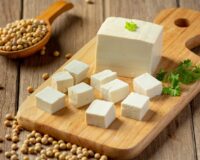Cleaning products are supposed to eliminate all the dirt, germs and other contaminants residing in our homes right? But have you ever thought about how cleaning products are harmful to us and the environment? In spite of the fact that companies mention all the ingredients on their packaging, the harm that ensues due to their use is not apparent to most of us.
It’s understandable that every solution has a certain amount of toxic chemicals which are necessarily required for the functioning of the product and companies don’t want to publish them.
Companies that assure you that their products emit only ‘natural fragrance’ with the use of limited chemicals are not entirely “natural”. They are often chemicals that mimic a fragrance. Let us understand what some of the harmful ingredients present in your everyday cleaning products are and how they harm us and the environment.
How cleaning products are hazardous to us?
According to the Food and Drug Administration (FDA – USA) and a journal developed by the Environmental Protection Agency (EPA – India), only 1% of the chemicals used among other thousands have been tested in real-time laboratories before releasing products to the public.
With their everyday use, chemicals emitted from them interfere with our body’s endocrine system, developing reproductive and neurological effects. While they seem to have minimal to neutral effects right away, they have already become a potential threat by showing possible outcomes.
Besides the active ingredients intended to kill germs, some products also contain hazardous compounds. Some of the most popular cleaners include
- Carcinogens – chemicals that are proven to cause cancer
- Endocrine disruptors – chemicals that mimic human hormones
- Neurotoxins – chemicals that affect brain function
- Allergens – ingredients that trigger allergic reactions
Here’s a short list of other dreadful chemicals and their possible dangers. We are sure that even if you use a big magnifying glass to identify which of them are present behind the product label, the possibility of finding them is very slim.
The actual fact is that neither the industry nor the government is sure about their long-term impact but we must acknowledge what to prefer before having our hands on them.
- Formaldehyde
Formaldehyde is a colorless, strong-smelling gas that is used in household cleaning products and other building materials. Exposure to formaldehyde can lead to cancer risk even at very low levels.
- Petroleum distillates
Petroleum distillates are an absolutely essential ingredient used in the making of cleaning products. They are highly flammable and a potential threat to skin, lung tissues, and nerve cells.
- Propylene glycol
Propylene glycol is a vicious colorless and odorless liquid. Ingestion of it can damage your kidneys, lungs, and nervous system.
- Chlorine bleach
Chlorine bleach is the most commonly used cleaning product for activities like laundry and dishwashing. This chemical can release volatile organic compounds such as carbon tetrachloride and chloroform which may increase the risk of carcinogenic health.
- Sodium Lauryl Ether Sulfate (SLES)
Another essential ingredient used in laundry and dishwashing products is both in liquid and detergent form. They are a potential threat to eyes, skin, and lungs also damaging internal organs.
- Trichloroethane
Trichloroethane is also known as methyl chloroform which is also a colorless liquid used as a sweet-smelling substance. Exposure to this can be a threat to your kidneys, lungs, and liver.
- Ammonium sulfate
This is one of the most threatening chemicals that is also addictive and toxic even its manufacturers won’t suggest using it indoors. Ammonium sulfate can cause a high level of irritation to the skin and throat, which may also lead to cough, sore throat, and wheezing.
- Sodium hydroxide
Also known as caustic soda is an inorganic chemical compound. Usage of sodium hydroxide can cause severe damage to the eyes, mouth, skin, and throat. It also damages your liver and kidneys.
- Phenols
Despite their minimal usage in cleaning products, Phenols can be extremely harmful to both us and animals. Phenol properties allow easy breakthroughs to our cellular membranes ultimately leading to cell death necrosis. This composition also consists of minimal carcinogens which is also a big threat to causing cancer in living tissue.
- Parabens
Many household cleaning products available in the market consist of parabens which is a man-made chemical that can be used as a disinfectant preservative in cleaning, food products, and also in pharmaceuticals.
- Sulphuric acid
While this chemical is an essential ingredient used in dilute composition, it is very dangerous as exposure to it can burn your skin and also have carcinogen substances.
In addition to all of this cleaning products are also divided into different types where each has different chemical compositions. Some of them are…
- Aerosols.
They are used as air fresheners, window cleaners, deodorants, furniture polishers, and others. Aerosols consist of chemicals like formaldehyde, phenols, carcinogens, and others that are harmful to the eyes, skin, throat, and kidneys.
- All-purpose cleaners
The majority of them consist of phthalates, morpholine, ethylene glycol butyl, and formaldehyde, which can cause reproductive problems, liver damage, and kidney damage.
How do cleaning products endanger our environment?
We all need clean spaces around us without any dust and germs but have you ever considered the environmental impact of using cleaning products? Many recent pieces of research have concluded that these products are becoming a big threat to the environment, silently but in a deadly way. Some of the powerful disinfectant cleaning products are major contributors to threatening the environment.
Toxic cleaning products’ regular usage can significantly impact air and water quality. Additionally, product waste after its usage is also a big challenge for the environment as many containers are not made up of recyclable materials. Volatile organic compounds (VOC) like Phosphorus, nitrogen and ammonia chemicals are considered the worst environmental hazards in household cleaners. VOCs largely contribute to smog and air quality depletion.
VOCs are also found in large quantities in many household cleaning products such as stain removal, disinfectant liquids, dishwashing liquid, bathroom cleaners, and others. The inclusion of VOCs is also another reason for the increase in environmental threat. Air contamination hazards, for instance, with the increase of VOC concentration in household products and because of their regular usage, the problem of air contamination is becoming universal when the windows are raised to ventilate while cleaning.
How cleaning products are affecting the marine environment?
You may never think about how household cleaning supplies can contaminate water but as they are entirely made up of hazardous chemicals like phosphorus, nitrogen, ammonia, and others, they’ve silently become a bigger threat to the marine environment. All the cleaning supplies, once they go down in our drains and water pipes, contaminate every water bodies and organisms they touch with the chemicals they’ve made up of from drain pipes to the ocean.
The fact that drainage water line bodies are treated with wastewater treatment facilities before making their way to rivers and lakes is neutral. The majority of the chemicals associated with cleaning products will end up in the ocean as it is impossible to entirely remove all chemicals from wastewater treatment facilities, eventually polluting oceanic bodies and devastating marine life. VCOs again affect water bodies causing the growth of green algae, which then triggers bacteria growth in water, turning it into a slimy and smelly gunk.
To put it simply, chemical cleaners are making our water bodies and their life to die a slow and painful death. The below-mentioned list consists of some chemical compounds found in cleaning products that can harm our oceans.
- Triclosan
- Phosphates
- Phthalates
- Nonylphenol Ethoxylate
- Methylisothiazolinone
How to identify Organic alternatives for toxic cleaning products?
From startups to established organizations, many companies are now producing chemical-free cleaning products which are made entirely from natural ingredients. Organic cleaning products are less hazardous for both us and environmental health. Some companies are making sure that the containers are also recyclable or recycled packaging.
There are already a handful of companies advertising that their products are more natural and contaminant free than they actually are. However, the shift of people purchasing organic cleaning products is better for both the environment and themselves. Some aspects to consider while buying organic cleaning products are…
- Recyclable material
- Natural fragrances
- Organic solution
- Phosphate-free
- Clear label of use and information on disposal.
- Biodegradable or not
- Free of dyes, chlorine, and hypochlorite.
You also can have alternate substitutions to both which is to make a product on your own with homemade ingredients such as baking soda, lemon juice, vinegar, washing soda, cornstarch, vegetable oil, and others.
Purity Prayag’s contribution to the change
Organic cleaning products are making their mark in the global market with each day passing. Natural alternatives are typically safer for us and the environment than the non-green equivalents. Companies that make pure organic cleaning products without any inclusion of chemicals are rare to identify to shop from them. Purity Prayag is one among them.
Purity Prayag retails organic home cleaning products and organic laundry products that influence your homes and bodies in a healthy way by offering a large selection of pure and natural products. These products include organic food items, pesticide-free fruits and vegetables, paraben- and sulfate-free personal care items, paraben- and sulfate-free household cleansers, and hormone- and residual-free organic dairy products.
We are committed to bringing a more thorough change that nurtures the environment and all living beings with better health and we hope you to join our journey of eliminating hazardous pollutants that are responsible for human and environmental sickness.






